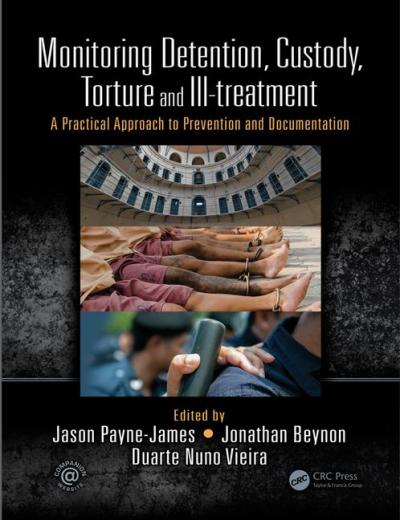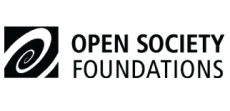Book Review: Monitoring Detention, Custody, Torture and Ill-treatment: A Practical Approach to Prevention and Documentation
Posted
Time to read
Post by Dr Hindpal Bhui. Hindpal is Inspection Team Leader at HM Inspectorate of Prisons, UK and a Visiting Professor at the Centre for Criminology, University of Oxford. He has led several hundred inspections of prisons and immigration detention facilities, and has advised and trained prison monitors across the world.
Review of Monitoring Detention, Custody, Torture and Ill-treatment: A Practical Approach to Prevention and Documentation, by Jason Payne-James, Jonathan Beynon and Duarte Nuno Vieira (eds.) (CRC Press, 2018).

While practical guides rarely make compelling reading, this one manages to sustain narrative flow within and between chapters surprisingly well. It is comprised of concise and consistently well written contributions that are easy to understand for experts and lay readers alike. The contribution on hunger strikes by Hernán Reyes is a particularly good example of both detailed clinical advice and a well-argued essay that challenges the justifications often provided by prison authorities for intrusive force-feeding. The author points out that a hunger strike is typically a political act aimed at shaming the prison authorities. He cautions monitors and health professionals against being used by the authorities to help bring protests to a conclusion through health preservation arguments that may be largely spurious. Very few prisoners die as a result of a hunger strike or are actually trying to kill themselves, and suicide prevention is therefore almost always a fallacious reason for intervention; any prisoner who truly wanted to commit suicide, Reyes argues, would choose a less painful way.
The chapter on sexual assault by Jason Payne-James is similarly expansive. It outlines the disturbing prevalence of rape, sexual enslavement and sexual torture in conflict situations such as the wars in Rwanda and the former Yugoslavia. While there is still a general lack of data on the sexual violence within custodial environments, the largest studies from the USA suggested that 4.5% of all detainees had experienced sexual victimisation from other detainees or staff. Payne-James discusses the importance of investigators distinguishing between different types of sexual contact. This may be clearly non-consensual sexual assault, fully consensual if it is between adult detainees or, in the case of staff-detainee contact, more subtly coercive and result from power imbalances in the detention setting. The author also discusses poor operational detention practice, noting the reluctance in many countries to introduce harm reduction measures which may be seen as condoning illegal activity. This may mean, for example, that condoms are not provided and the risk of infection, and HIV in particular, increases as a result of cultures of denial and institutionalized homophobia.
In his chapter on the standards applicable in the prevention of torture, Jonathan Beynon describes the development of national, regional and international standards for protecting those deprived of their liberty over the last 60 years, and how monitoring by external, independent bodies has become more accepted over the last 30 years. Such acceptance is reflected in the work of European Committee for the Prevention of Torture (CPT) and the creation of National Preventive Mechanisms to bring greater transparency to detention in many parts of the world. Governments largely cooperate with these monitoring bodies by providing access. However, as CPT reports so often point out, the principle of cooperation must also involve a commitment to implement recommendations for improvement and uphold international standards. Progress in this regard remains, as Beynon notes, painstakingly slow.
While the theoretical value of external scrutiny is acknowledged throughout the book, Vincent Iacopino’s chapter on the Istanbul Protocol depressingly concludes that monitoring has so far been ineffective in deterring state impunity for torture and other forms of ill treatment. He argues that the lack of a global culture upholding human rights remains a severe impediment to progress. This view is reinforced in Juan E. Mendéz’s chapter on the International Legal Framework on Torture, which considers the prohibition against torture and other cruel, inhumane or degrading treatment as set out in the canon of international human rights law. He describes attempts to subvert the requirements of the Convention Against Torture by the US authorities who issued (erroneous) advice to intelligence officials on how to avoid techniques of interrogation that might reach the technical definition of torture. Forensic evidence, he argues, can allow the closure of such perverse loopholes, real or imagined, explicit or implicit, which continue to be used to evade human rights responsibilities.
The book is intended mainly for health professionals but it should be read by all those managing or monitoring detention, whatever their background. The book has a broad relevance beyond the health professions as a resource that can promote understanding of legal and ethical guidelines, and contribute to well-informed monitoring and investigation practices. While there are other monitoring guides - for example, several excellent publications from the Association for the Prevention of Torture - they tend to be more narrowly conceived lists of standards and practical tips. This book is more discursive and combines practical guidance with a readable and thoughtful examination of many controversial detention practices.
Any comments about this post? Get in touch with us! Send us an email, or post a comment here or on Facebook. You can also tweet us.
__________
How to cite this blog post (Harvard style)
Bhui, H. (2019) Book Review: Monitoring Detention, Custody, Torture and Ill-treatment: A Practical Approach to Prevention and Documentation. Available at: https://www.law.ox.ac.uk/research-subject-groups/centre-criminology/centreborder-criminologies/blog/2019/09/book-review (Accessed [date])
YOU MAY ALSO BE INTERESTED IN
With the support of









